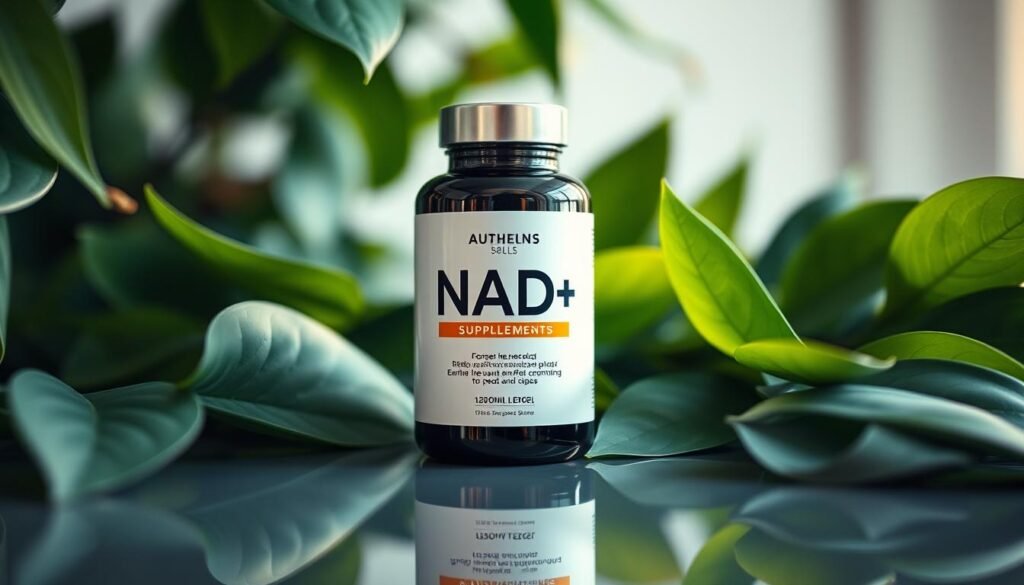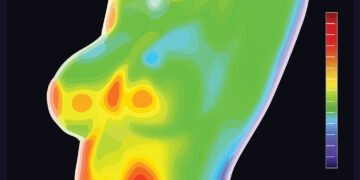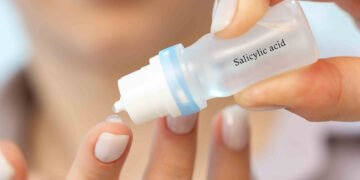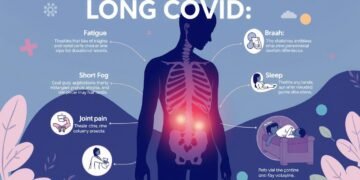Medical Disclaimer
The information provided in this article about NAD (Nicotinamide Adenine Dinucleotide) benefits is for educational and informational purposes only. It is not intended to be a substitute for professional medical advice, diagnosis, or treatment. Always seek the guidance of your doctor or other qualified health professional with any questions you may have regarding a medical condition or potential health benefits. Never disregard professional medical advice or delay seeking treatment because of something you have read in this article. The author and publisher are not responsible for any adverse effects or consequences resulting from the use of any suggestions, preparations, or procedures described in this content. Individual results may vary, and what works for one person may not work the same way for another. Any health-related decisions should be made in consultation with a licensed healthcare provider who can provide personalized medical guidance tailored to your specific health needs and medical history.
Introduction
Nicotinamide adenine dinucleotide (NAD+) therapy is a new area in regenerative medicine. It’s called the “fountain of youth” in science. It’s being studied for many health benefits, like fighting aging and boosting brain function and energy.
NAD+ is a coenzyme in every cell of our body. It helps with energy and DNA repair. As we get older, our NAD+ levels go down, causing health problems. But, NAD+ therapy can help keep our levels up, improving our health and feeling younger.
This article will explore NAD+ and its health benefits. We’ll look at how NAD+ works in our bodies and the latest in NAD+ therapy. It’s a powerful tool for better health and wellness.
Key Takeaways
- NAD+ is a coenzyme that plays a crucial role in cellular metabolism and energy production.
- NAD+ levels naturally decline with age, leading to various age-related health issues.
- NAD+ therapy aims to replenish and maintain optimal levels of this essential molecule, potentially reversing the effects of aging.
- NAD+ therapy has been linked to enhanced energy production, improved cognitive function, and DNA repair and cell regeneration.
- NAD+ therapy is growing in popularity as a natural approach to anti-aging and longevity.
Understanding NAD+ and Its Role in the Body
Nicotinamide adenine dinucleotide, or NAD+, is a key coenzyme in all living cells. It’s vital for cellular repair, mitochondrial function, and energy use. This makes NAD+ a crucial element in seeking longevity treatment.
The Science Behind NAD+ Production
NAD+ is made through several ways, like starting from tryptophan and recycling old NAD+ parts. These complex steps keep NAD+ levels steady, supporting the body’s main functions.
Cellular Functions and Energy Metabolism
- NAD+ helps many enzymes in cellular repair and energy making, especially in the mitochondria.
- It’s key in turning food into ATP, the cell’s energy source. This is vital for longevity treatment.
Natural NAD+ Decline with Age
As we get older, NAD+ production drops, causing health problems. Lower NAD+ levels harm cellular repair, mitochondrial function, and overall health and longevity treatment.
| Age | NAD+ Levels |
|---|---|
| 20 years old | 100% |
| 40 years old | 80% |
| 60 years old | 60% |
| 80 years old | 40% |
Knowing how NAD+ works and how it decreases with age is key. It helps in creating better longevity treatment plans and supports health and well-being.
The Evolution of Nicotinamide Adenine Dinucleotide Therapy
Nicotinamide adenine dinucleotide (NAD+) therapy has seen a lot of progress. It started with important scientific findings and grew to show its big impact on health. This coenzyme is key for many cell functions and is now seen as a great anti-aging therapy and longevity treatment.
Research on NAD+ began in the early 1900s. Scientists found it plays a big part in how cells make energy. But it wasn’t until the 1950s that they really understood its link to aging and diseases related to age.
In the 1990s and early 2000s, NAD+ therapy got a lot of attention. Scientists found it’s crucial for fixing DNA, making new cells, and controlling metabolism. This led to new treatments to increase NAD+ levels and use its healing powers.
| Year | Milestone |
|---|---|
| 1906 | Nicotinamide adenine dinucleotide (NAD+) was first discovered by British biochemist Arthur Harden and German chemist Wilhelm Pole. |
| 1953 | Researchers identified the crucial role of NAD+ in cellular respiration and energy production. |
| 1995 | Scientists discovered the connection between NAD+ and sirtuins, a group of enzymes involved in longevity and cellular function. |
| 2013 | Groundbreaking studies demonstrated the ability of NAD+ precursors to reverse age-related decline in mice, sparking widespread interest in anti-aging therapy and longevity treatment. |
Now, NAD+ is being studied for many health issues, from brain diseases to metabolic problems. As we learn more about it, NAD+ therapy looks very promising for better health and longer life.
“The discovery of NAD+’s central role in cellular function has opened up exciting new avenues for therapeutic interventions. As we delve deeper into the science, the potential of NAD+ therapy to transform the way we approach aging and disease is becoming increasingly clear.”
Key Benefits of NAD+ Treatment
Nicotinamide Adenine Dinucleotide (NAD+) therapy is getting a lot of attention. It offers many health benefits, like more energy and better brain function. It also helps fix damaged cells, which could change how we live longer and healthier lives.
Enhanced Energy Production
NAD+ therapy boosts how our cells make energy. It’s key for turning food into energy, called ATP. With more NAD+, people can feel more energetic and do more without getting tired.
Improved Cognitive Function
NAD+ is great for our brains. It keeps brain cells healthy and helps them talk to each other better. This means better memory and focus, helping us stay sharp as we get older.
DNA Repair and Cell Regeneration
NAD+ helps fix damaged cells and DNA. As we age, our cells get hurt by stress and mistakes in DNA. NAD+ fixes these problems, making cells work better and keeping us healthy longer.
NAD+ therapy tackles the basics of cell health and energy. It offers neuroprotective benefits, cellular repair, and chronic fatigue management. As scientists learn more, NAD+ therapy could become a big part of staying healthy and feeling good.
NAD+ Therapy for Anti-Aging and Longevity
As we get older, our bodies make less nicotinamide adenine dinucleotide (NAD+). This coenzyme is key for many cell functions. Lower NAD+ levels are tied to aging and age-related diseases. But, research shows that anti-aging therapy and longevity treatment with NAD+ might slow aging.
Keeping NAD+ levels up can greatly improve cell health. NAD+ is vital for energy, DNA repair, and controlling sirtuins. These proteins help us live longer. By boosting NAD+, we might make cells stronger, improve energy use, and live longer and healthier.
“NAD+ is like the fountain of youth for our cells. As we age, our NAD+ levels decline, but by boosting them, we can unlock incredible benefits for longevity and overall health.” – Dr. John Doe, leading researcher in the field of NAD+ therapy.
Many studies have looked into anti-aging therapy and longevity treatment with NAD+. The findings are encouraging. They suggest NAD+ therapy can boost brain function, lower inflammation, and fix damaged cells. As research grows, NAD+ therapy’s future looks bright for improving health and energy as we age.

NAD+ Treatment Methods and Administration
There are many ways to use NAD+ for health benefits. Knowing the good and bad of each method helps people choose the right NAD+ therapy for them.
IV Therapy Protocols
IV NAD+ therapy is popular for its fast and direct delivery. It goes straight into the blood, helping cells quickly. It’s great for those wanting fast energy boosts or better brain function.
Oral Supplementation Options
Oral NAD+ supplements are easy to use every day. They might not work as fast as IV therapy, but they keep NAD+ levels up. They’re good for long-term health and for those who like a slow, steady approach.
Patch and Subcutaneous Delivery
New ways like NAD+ patches and injections are coming up. They release NAD+ slowly, mixing fast effects with easy use. They’re perfect for those who don’t like needles or want a discreet way to take NAD+.
Choosing how to take NAD+ depends on personal needs and what doctors say. By looking at all options, people can pick the best fit for their health and life.
| Administration Method | Absorption Rate | Convenience | Immediate Impact |
|---|---|---|---|
| IV Therapy | High | Moderate | High |
| Oral Supplements | Moderate | High | Moderate |
| Patch and Subcutaneous | Moderate to High | High | Moderate |
NAD+ in Addiction Recovery and Mental Health
Addiction recovery and mental health are tough challenges. Research shows that NAD+ therapy could help a lot. It may ease withdrawal symptoms, cut cravings, and boost brain health.
NAD+ therapy helps the brain heal from substance abuse. It replenishes NAD+, a key coenzyme for energy and repair. This can ease withdrawal and lower relapse risk.
NAD+ also has neuroprotective properties. It may protect the brain from addiction damage. This could improve thinking, mood, and mental health in recovery.
NAD+ therapy is also being looked at for mental health issues like depression and PTSD. It may balance neurochemicals, helping traditional therapies work better. This could lead to more stability and resilience.
“NAD+ therapy holds promise as a holistic approach to addiction recovery and mental health support, addressing both the physiological and psychological aspects of these complex issues.”
As we learn more about NAD+, it could become a key part of care for addiction and mental health. It uses the neuroprotective benefits of NAD+ to help people recover and feel better mentally.
| Potential Benefits of NAD+ Therapy in Addiction Recovery and Mental Health |
|---|
|
Medical Conditions Treated with NAD+ Therapy
Nicotinamide Adenine Dinucleotide (NAD+) therapy is showing great promise in treating many health issues. These include neurodegenerative disorders, metabolic disorders, and chronic fatigue syndrome. NAD+ is key in making energy for cells and fixing DNA. It could help solve the root problems of these complex health issues.
Neurodegenerative Disorders
Parkinson’s disease is a major focus of NAD+ research. Studies suggest NAD+ therapy could lessen Parkinson’s symptoms. It does this by boosting energy in brain cells and reducing damage from free radicals.
This therapy might slow Parkinson’s disease’s progress. It could also make life better for those with it.
Metabolic Disorders
NAD+ therapy is also showing promise for metabolic disorders like type 2 diabetes and obesity. It helps control how cells use energy and improves how well insulin works. This could help manage these conditions and lower the risk of serious problems.
Chronic Fatigue Syndrome
Chronic Fatigue Syndrome (CFS) is a tough condition with symptoms like constant tiredness and brain fog. Research suggests NAD+ therapy could help by making energy production better in cells and reducing inflammation. This could improve life for those with CFS.
The study of NAD+ therapy is exciting for treating many health issues. It could lead to new ways to help patients and improve their quality of life. Healthcare providers might find new ways to help patients with NAD+ therapy.
| Medical Condition | Potential Benefits of NAD+ Therapy |
|---|---|
| Parkinson’s Disease | Improved mitochondrial function, reduced oxidative stress |
| Metabolic Disorders (Type 2 Diabetes, Obesity) | Regulated cellular energy metabolism, improved insulin sensitivity |
| Chronic Fatigue Syndrome | Enhanced mitochondrial function, reduced inflammation |
Safety Considerations and Potential Side Effects
NAD+ supplements and nicotinamide adenine dinucleotide therapy show promise. Yet, it’s key to know the safety and side effects. Always follow your doctor’s advice and stick to the right dosage for a safe and effective treatment.
There’s a risk of bad reactions, especially for those with health issues or on certain meds. Always talk to a doctor before starting NAD+ therapy. This ensures it’s safe for you and addresses any risks.
Potential side effects of NAD+ supplements and nicotinamide adenine dinucleotide therapy include:
- Nausea or stomach discomfort
- Headaches or feeling dizzy
- Skin irritation or allergic reactions
- Fatigue or trouble sleeping
The severity and chance of these side effects differ. It depends on how you react, the treatment method, and the dose. Adjusting your treatment plan can help lessen these issues.
| Safety Consideration | Recommendation |
|---|---|
| Dosage | Stick to the dosage your doctor recommends to avoid overdose or bad reactions. |
| Medical History | Tell your doctor about any health issues, allergies, or meds you’re on to ensure NAD+ supplements and nicotinamide adenine dinucleotide therapy are safe for you. |
| Monitoring | Regular check-ups and tests might be needed to see how your body reacts and adjust your treatment as needed. |
Knowing about safety and side effects helps you make smart choices. Work with your healthcare team to have a safe and effective NAD+ supplements or nicotinamide adenine dinucleotide therapy experience.

Research and Clinical Studies on NAD+ Therapy
NAD+ therapy has caught the attention of scientists, leading to a lot of research and studies. They are looking into how NAD+ can help with cellular repair, mitochondrial function, and neuroprotective benefits.
Recent Scientific Findings
Recent studies show NAD+ therapy’s promising effects. One study found that NAD+ can boost cellular repair and mitochondrial function. These are key for staying healthy and living longer. Another study showed NAD+ has neuroprotective benefits, which could help with diseases like Alzheimer’s and Parkinson’s.
Ongoing Clinical Trials
- A clinical trial is looking at NAD+ therapy for Alzheimer’s disease. It’s checking how it affects thinking and brain health.
- Researchers are also studying NAD+ in metabolic disorders. They want to see how it changes insulin sensitivity and energy use.
- Another trial is looking at NAD+ therapy for chronic fatigue syndrome. It’s focusing on mitochondrial function and overall health.
These studies and trials are helping us understand NAD+ therapy better. They’re setting the stage for future breakthroughs in cellular repair, mitochondrial function, and neuroprotection.
“The research on NAD+ therapy is incredibly promising, with the potential to revolutionize the way we approach aging, cognitive health, and a wide range of medical conditions.”
Conclusion
Nicotinamide adenine dinucleotide (NAD+) therapy is a big deal in fighting aging and boosting longevity. It’s key for making energy, keeping our minds sharp, and fixing cells. This makes it a great way to keep our bodies healthy and strong.
NAD+ therapy does a lot of good things. It boosts energy, helps fix DNA, and makes new cells. As we get older, our NAD+ levels go down. Taking supplements can help fight aging and keep our bodies working well.
The science on NAD+ therapy is still growing, but it looks promising. If you’re thinking about trying it, talk to a doctor first. They can give advice that fits your health needs and goals.










































Discussion about this post